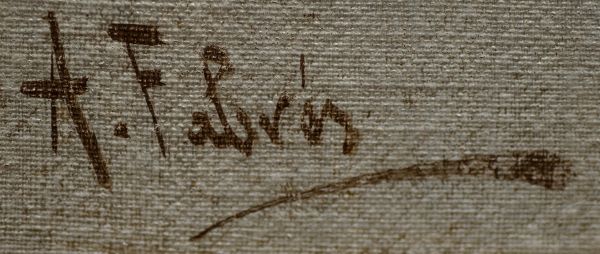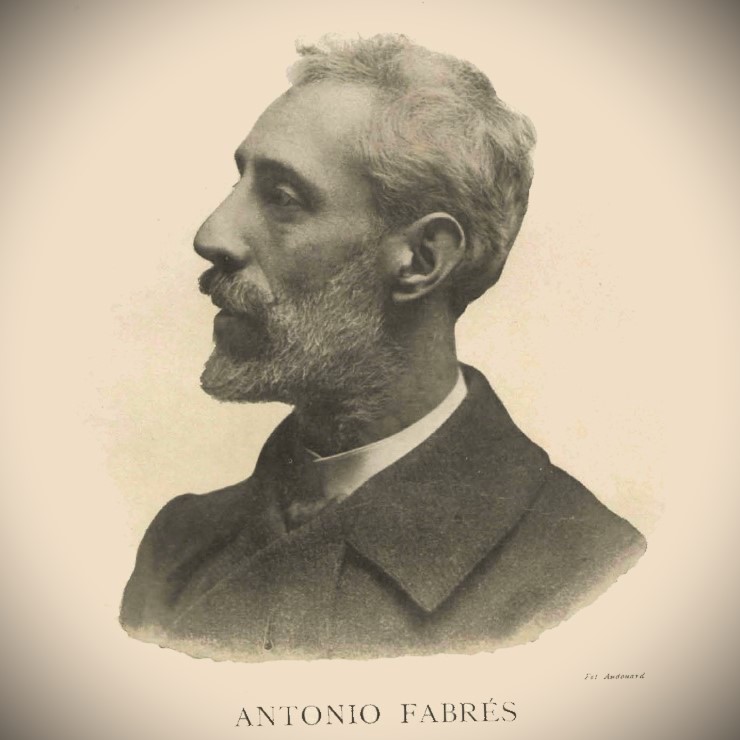

Antonio Fabrés
Barcelona, Spain
(1854 – 1938)
Antonio María Fabrés y Costa was a Catalan artist of great talent who left a lasting legacy in the art world. His work, characterized by its Orientalist style and realism, continues to be admired for its artistic and historical value.
Known in his native language as Antoni Fabrés, he was born in Gràcia, Barcelona, on June 27, 1854. He showed great artistic ability from a young age, talent that was cultivated under the tutelage of his father, Cayetano Fabrés, who was a drawing teacher.
He studied at the La Lonja School of Barcelona. In 1875, he was awarded a scholarship to Rome, where he began to cultivate watercolor under the influence of Mariano Fortuny. With this technique, he quickly achieved success creating precious illustrations for books and magazines. Fabrés y Costa developed a prolific artistic career that spanned sculpture and painting. His work was characterized by an Orientalist style, deeply influenced by the master Fortuny.
Throughout his life, Fabrés y Costa traveled and resided in various places, further enriching his artistic vision. He spent considerable time in Mexico, where he created works that reflected the culture and traditions of the country. He also lived in Paris and Rome for an extended period, where he immersed himself in the artistic atmosphere of the cities and established close ties with other artists. For much of his life, he enjoyed significant success. He painted the portrait of Pope Benedict XV, was commissioned by the Italian royal family, and had Mexican artists Diego Rivera and José Clemente Orozco as students.
In 1926, during the dictatorship of Primo de Rivera, Fabrés donated a collection of 225 works to the Junta de Museos de Catalunya. In exchange, the City Council of Barcelona pledged to grant him a lifelong pension. However, Joaquim Folch i Torres, who led the Junta de Museos de Catalunya at that time, accepted the donation without knowing the content of the legacy set. Furthermore, Folch i Torres decided to dedicate the Salón de la Reina Regente for the permanent exhibition of Fabrés' works. This decision caused strong rejection in the artistic circles of the city, which considered other artists more deserving of such privilege. A crucial misunderstanding was that it was mistakenly believed that Fabrés had set the permanent exhibition of the set as a condition for the donation. This misunderstanding has persisted for a long time. These factors contributed to what seemed like the beginning of a future destined for success turning into a real nightmare for Fabrés.
The radical ostracism he suffered towards the end of his life led him to a state close to madness. However, despite the difficulties, Fabrés' work has been recognized for its multifaceted versatility. His work has been exhibited worldwide and remains in important permanent collections such as the Museu Nacional d'Art de Catalunya (MNAC), demonstrating his ability to transition from Orientalism to a socially critical realism or to the less conventional portrait.
Antonio María Fabrés y Costa passed away in Rome in 1938. He is considered one of the most important Catalan artists of the 19th and early 20th centuries. Fabrés y Costa's work exerted a notable influence on the subsequent generation of Catalan artists, especially those dedicated to Orientalism. His realistic style and his ability to capture the essence of everyday life inspired many artists to explore similar themes in their own works.

